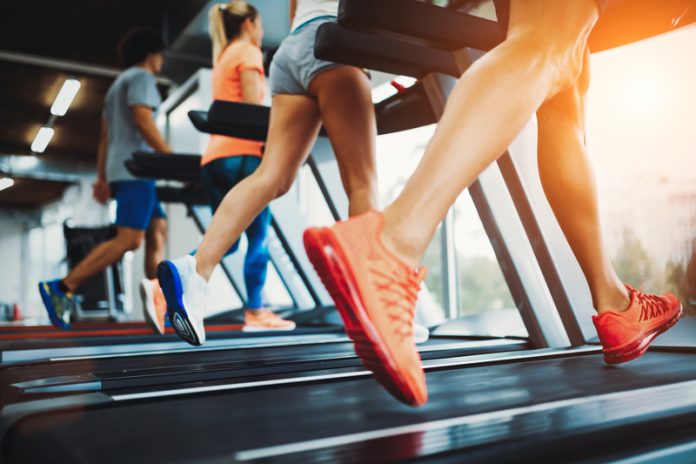A new study has revealed that muscular weakness is directly linked with disability later on in life, but exercise could help reduce the risk
A recent paper published last week collected by the Swedish national registers[1] has accurately proven that a cohort study of males aged 16-19 years over a 30 year period, recruited from the Swedish military conscription registration between 1969 and 1996 showed that adolescent muscular weakness was directly linked with disability later on in life.
The candidates who were physically stronger carried a much lower chance of future disability pension, compared to those which showed being unfit, obese and weak showing a higher case of disability at the end of the study. This demonstrates that regardless of your BMI, strong muscle weakness will give you a better physical advantage later in life.
Following on from this, an existing study carried out by Marc Roig[2] (formerly of the University of Copenhagen in Denmark, now based at McGill University in Montreal, Canada) has proven that a single bout of exercise is linked to enhance motor memory which is vital for adolescents who are doing their exams and studies.
The professors are undertaking a further study to explore how and why exercise, specifically cardio exercise might help individuals retain newly acquired motor skills, such a brain connectivity as it is thought exercise can ‘free up’ brain space. This is based on a 24 hour ‘pinch test’ which showed that those who exercised in between the two tests performed better at the task, compared to those who did no exercise.
Another paper released by the NBCI[3] concludes that youth-athletes and non-athletes can successfully and safely improve their strength and overall health by participating in a well-supervised programme. However, trained fitness professionals are encouraged to guide these youths so that they practice a proper technique and form in a safe environment.
Tony Kochhar goes on to comment: “This topic became very personal to me as my adolescent children would participate in team sports, but they were apprehensive and unsure how to work-out safely in a gym, yet alone find a gym suitable for their age”.
He then goes on to say: “Science says exercise is good for them, but there is too much concern from parents who are worried they will get addicted and on steroids, plus the gyms themselves do not have the correct safe guarding and DBS checks in place to allow under 18’s”.
A number of gyms nationwide are now accommodating under 18’s to take part in group classes and supervised training, including the reputable BXR on London’s Chiltern Street. Allowing youths to get involved in a healthy lifestyle to strengthen muscle tone can make you better at other sports through strength, speed and jumping. There is also the advantage to prevent injuries, improve cardiovascular fitness, body composition, bone mineral density and blood lipid profiles. Naturally a good gym routine will help assist with maintain a healthy weight, healthy body and healthy mind.
Naturally there are risks involved when strength training is not carried out safely, however, another research paper has demonstrated the benefits of strength training far outweigh these risks.
Below are Tony Kochhar’s top tips for a safe practice in adolescents.
Do’s
- Always make sure you are evaluated by a healthcare professional before commencing any formal strength training programme, so that you can identify and discuss – previous injuries, low back pain, medical conditions, training goals, motives for wanting to train, techniques and expectations (from both child and parent).
- Know your equipment – make sure you have had a complete induction and know how all of the equipment works.
- Train with someone – it’s beneficial from a point of safety always having someone to “spot” you, but also with regards to progression. If you have arranged to meet a friend you are probably more likely to turn up!
- Build up gradually. Over 80% of injuries related to weight training are related to free weights. Initially focus on body weight exercises and resistance bands, progressing through machine weights into free weights.
- build a healthy routine – work out a routine involving multiple body parts. learn the proper technique first starting with a light weight warm up increasing with second and third sets if you can. If you are going to progress, increase the reps first before you increase the weights.
Don’ts
- Train every day – always have at least one rest day, minimum training is once a week but benefits are improved if training twice a week at least
- Training unsupervised – always have adult supervision
- Give up – the benefits may take a few weeks to show! Any benefits will be lost six weeks after you stop training.
Tony Kochhar’s recommended workout plan
- Start with body weight exercises for a few weeks (such as sit-ups, pushups, and squats) before using weights.
- Work out with weights about three times a week (not consecutive days – alternate with other exercises or rest days).
- Warm up for 5–10 minutes before each session.
- Work more reps; avoid maximum lifts. (A coach or teacher can give you specifics based on your needs.)
- Ensure you’re using proper technique through supervision. Improper technique may result in injuries, particularly in the shoulder and back.
- Cool down for 5–10 minutes after each session, stretching the muscles you worked out.
[1] https://bjsm.bmj.com/content/early/2018/06/19/bjsports-2017-098723
[2] https://www.medicalnewstoday.com/articles/amp/322447?
[3] https://www.ncbi.nlm.nih.gov/pmc/articles/PMC3445252/











